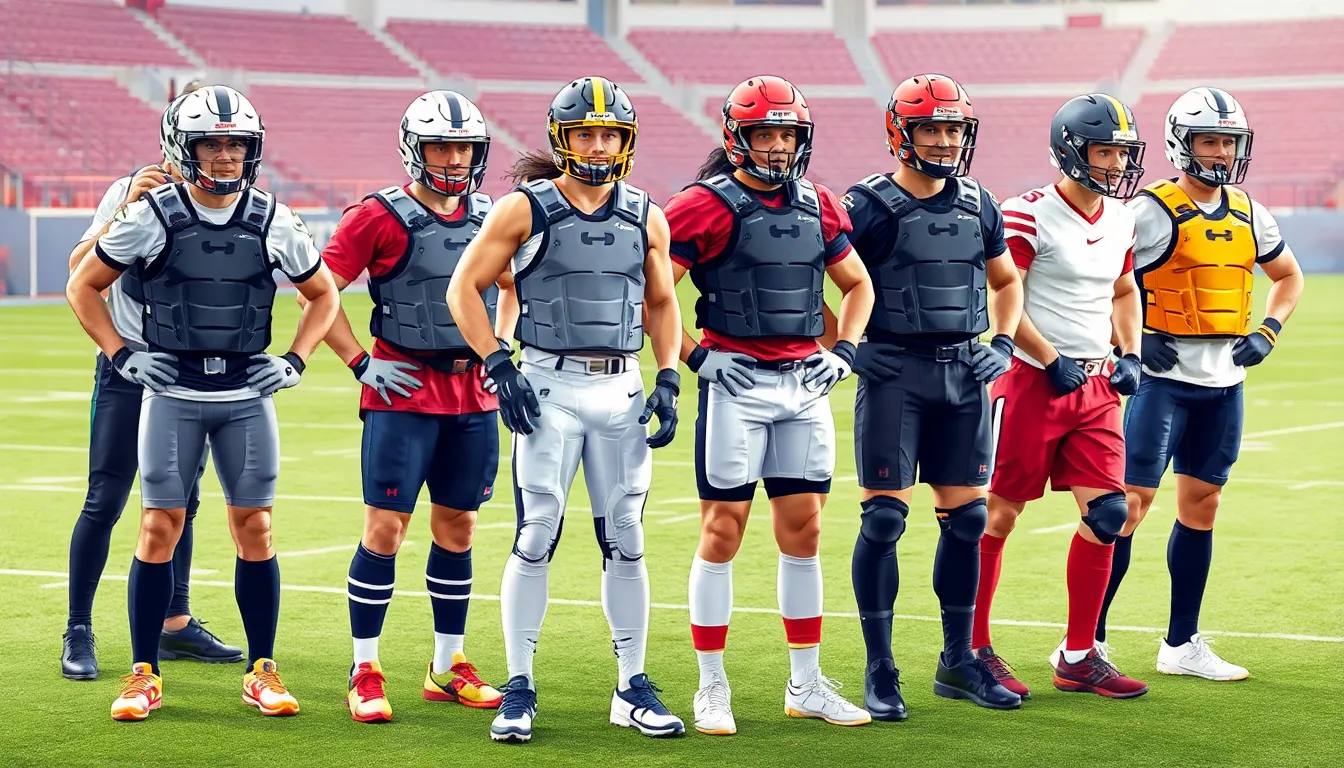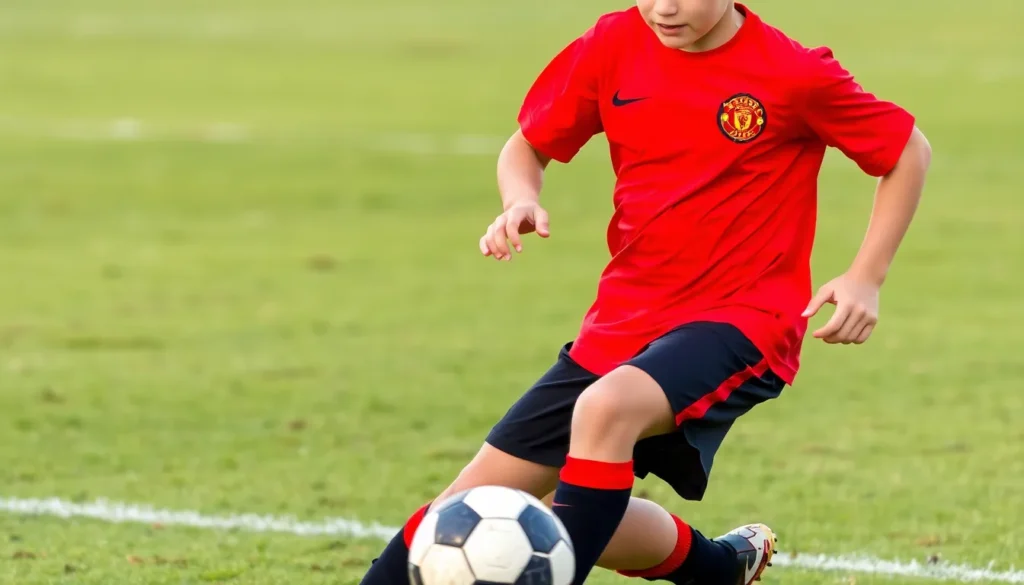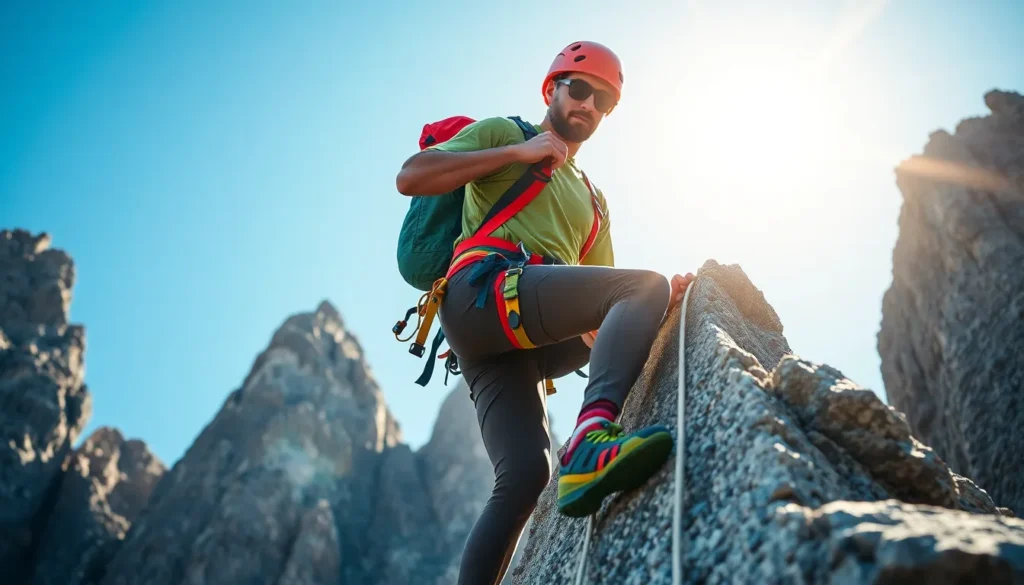In the world of sports, athletes are often celebrated for their incredible feats of strength and skill. But let’s face it, they’re also one tumble away from a dramatic slow-motion fall that could rival any action movie. That’s where protective gear comes in, serving as the unsung hero of the playing field. Whether it’s a helmet that keeps heads safe or shin guards that protect against rogue soccer balls, this gear isn’t just a fashion statement—it’s a necessity.
Protective Gear in Sports
Protective gear is vital in sports for reducing the risk of injury. Helmets protect the head from impacts in sports like football and cycling. Shin guards are crucial for soccer players, providing coverage against kicks and falls.
Wrist guards help skaters avoid fractures during falls. Elbow pads offer similar protection for skateboarders and bikers, absorbing shocks on contact. Chest protectors are essential in sports such as baseball and hockey, safeguarding vital organs during play.
Footwear designed for specific sports also plays a protective role. Basketball shoes often include ankle support, preventing sprains during quick movements. Soccer cleats enhance grip on the field while minimizing risks of slipping.
Studies indicate that using appropriate protective gear reduces injury rates significantly. According to the National Center for Catastrophic Sports Injury Research, wearing helmets decreases the likelihood of severe head injuries by 60%. Additionally, protective equipment legislation in various sports organizations promotes safe play environments.
Athletes report increased confidence when wearing protective gear, allowing them to focus on performance rather than fear of injury. In youth sports, proper gear is even more critical due to developing bodies and higher vulnerability to injuries.
Sports organizations continually emphasize the importance of utilizing protective equipment among all athletes. Training sessions often include education on the proper use and maintenance of such gear to maximize safety. By integrating protective gear into their routines, athletes contribute to a culture of safety in sports.
Types of Protective Gear

Protective gear comes in various forms, each designed to minimize the risk of injury across different sports. Understanding these categories helps athletes select the right equipment for safety.
Headgear
Headgear includes helmets and chin guards, crucial for protecting the head during contact sports. In football, helmets reduce the risk of concussions by 60%. Cyclists benefit from helmets that absorb impact during falls, effectively safeguarding against serious head injuries. Skateboarders also wear helmets to prevent traumatic brain injuries. This vital piece of equipment fosters confidence in athletes, allowing them to focus on performance.
Body Armor
Body armor encompasses several items, like chest protectors and pads. These products shield vital organs and joints during contact sports. Baseball catchers rely on chest protectors to guard against fast pitches. Similarly, hockey players use padded armor to minimize injuries from body checks. Each item contributes significantly to reducing the severity and frequency of injuries, instilling a sense of security in athletes.
Footwear
Footwear matters in injury prevention, providing support and traction tailored to specific sports. Basketball shoes offer ankle support and shock absorption, preventing sprains during quick movements. Soccer cleats enhance grip on grass surfaces, enabling players to make swift directional changes. Runners wear specialized shoes that reduce impact forces on joints, promoting overall health. Proper footwear fosters better performance, allowing athletes to excel safely in their chosen sports.
Importance of Protective Gear
Protective gear plays an essential role in ensuring athlete safety during sports. It minimizes risks and allows individuals to participate actively.
Injury Prevention
Injury prevention remains a primary benefit of protective gear in sports. Helmets reduce the likelihood of severe head injuries by 60%, particularly in contact sports. Shin guards protect soccer players’ shins from impacts and cuts. Wrist guards shield skaters’ wrists from fractures during falls. Elbow pads and chest protectors further defend vital areas and joints. The appropriate use of equipment effectively lowers overall injury rates. Athletes exposed to the right protective gear typically experience fewer injuries and faster recovery times.
Performance Enhancement
Performance enhancement also derives from wearing protective gear. Athletes feel increased confidence when equipped with safety gear, which allows them to focus entirely on their game. This psychological boost can lead to improved performance metrics. Specialized footwear, such as basketball shoes and soccer cleats, not only delivers support but also enhances traction and agility. The combination of protection and performance fosters an environment where athletes can perform at their best without the mental burden of potential injuries.
Guidelines for Choosing Protective Gear
Selecting protective gear involves several essential considerations to ensure safety and comfort. First, prioritize the specific sport in question, as each sport has unique demands and risks. A football helmet provides critical head protection during tackles, while shin guards are vital for soccer players to shield against kicks.
Next, size matters significantly. Protective gear must fit properly to maximize effectiveness. Gear that is too loose or too tight can impede performance and fail to offer adequate protection. For example, an ill-fitting helmet may shift upon impact, increasing the risk of injury.
Material quality is another key factor in choosing equipment. Look for products made from high-quality materials that can withstand impacts and wear. Lightweight and breathable materials enhance comfort during extended play while ensuring durability over time.
Consider the level of protection offered by various gear types. Some helmets feature advanced padding designed to absorb shocks, while certain shin guards provide reinforced structures for added protection. Research findings indicate that helmets can reduce the likelihood of severe head injuries by 60%, emphasizing the importance of choosing top-tier equipment.
In addition, brand reputation can play a significant role in decision-making. Brands with a history of producing reliable protective gear often invest in research and safety testing. Check for certifications or endorsements from recognized sports organizations, as these can assure quality and effectiveness.
Lastly, invest in equipment that athletes feel comfortable and confident wearing. The right protective gear not only prevents injuries but also allows players to focus on their performance. A safe sporting environment cultivates confidence, empowering athletes to play at their best while minimizing injury risks.
Conclusion
Protective gear in sports is more than just an accessory; it’s a vital component of athlete safety. By reducing injury risks and enhancing performance, proper equipment allows athletes to push their limits with confidence. Whether it’s a helmet for head protection or specialized footwear for support, each piece plays a critical role in safeguarding players.
As sports organizations continue to emphasize the importance of protective gear, athletes must prioritize selecting the right equipment tailored to their specific needs. Investing in quality gear not only fosters a culture of safety but also empowers athletes to focus on their skills without the fear of injury. Ultimately, the right protective gear is essential for thriving in any sport while ensuring a safe and enjoyable experience.


